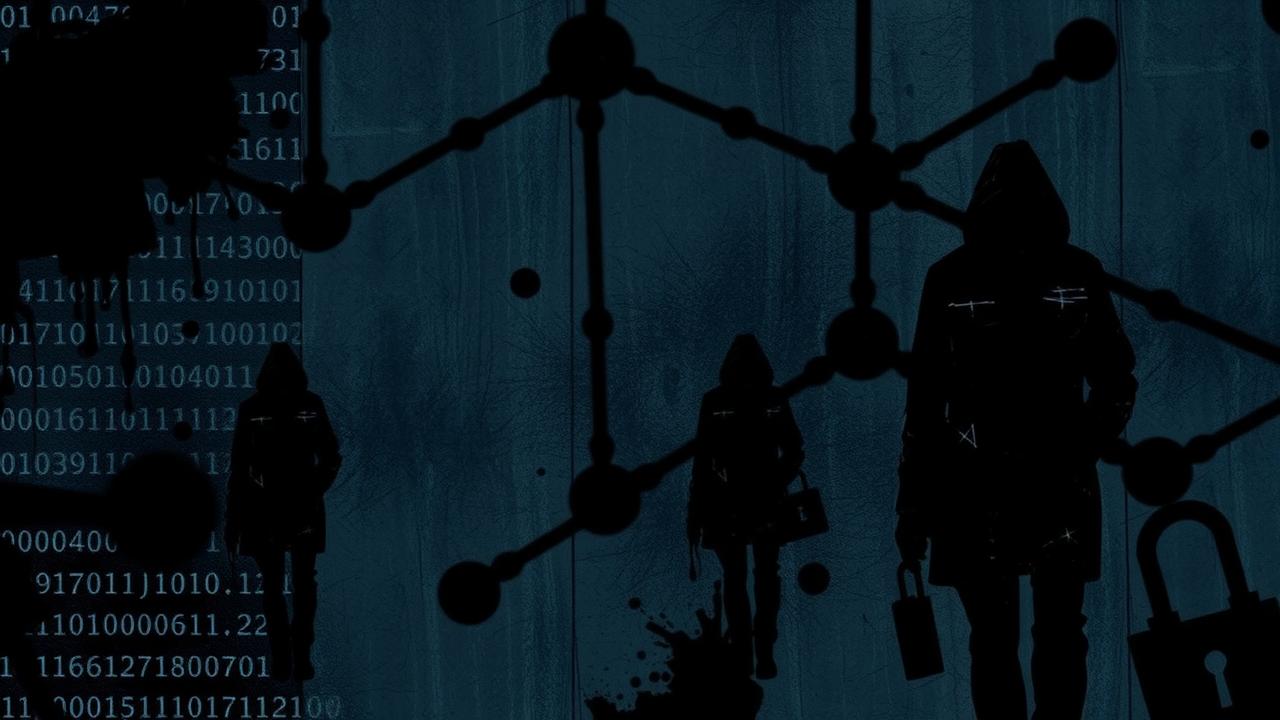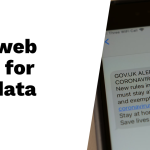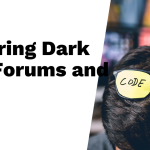The dark web is a hidden part of the internet that uses special software like Tor to keep users anonymous and content unindexed by regular search engines. It originally began as a way to secure sensitive communications but grew into a space hosting both legitimate activities, such as protecting activists and avoiding censorship, and illegal ones like drug trafficking and cybercrime. Its encrypted, decentralized nature challenges law enforcement efforts because tracking users is difficult and jurisdictions vary worldwide. While many myths paint it solely as a criminal hub, the reality involves complex issues around privacy, free speech, security, and criminal misuse—making it highly controversial.
Table of Contents
- Definition and Layers of the Dark Web
- How Technology Powers the Dark Web
- Positive Uses of the Dark Web
- Illegal Activities Found on the Dark Web
- Common Myths About the Dark Web
- Privacy and Crime: The Dark Web Debate
- Challenges for Law Enforcement
- Efforts to Regulate and Control the Dark Web
- Who Uses the Dark Web and Why
- Ethical and Political Issues Surrounding the Dark Web
- Future Trends and Emerging Threats on the Dark Web
Definition and Layers of the Dark Web
The internet is divided into three main layers: the surface web, the deep web, and the dark web. The surface web is what most people use daily, websites indexed by search engines like Google and publicly accessible without restrictions. The deep web lies beneath this, containing content not indexed by search engines such as private databases, online banking pages, and password-protected sites. The dark web is a small, hidden part of the deep web that requires special software like Tor, I2P, or Freenet to access. Unlike typical websites, dark web sites use encrypted connections and route traffic through multiple nodes to hide users’ identities and locations. For example, the Tor network alone hosts over 65,000 unique “.onion” sites, including marketplaces and forums. Because dark web content is unindexed by regular search engines, users need trusted links or directories to find it. Accessing it safely requires special browsers like the Tor Browser. The dark web operates on a decentralized system, meaning it has no central servers or authorities. Instead, it relies on peer-to-peer networks and volunteer nodes worldwide to keep the infrastructure running, making it resilient and difficult to shut down.
- The internet has three main layers: surface web, deep web, and dark web
- The surface web includes publicly accessible sites indexed by search engines
- The deep web holds unindexed content, like private databases and password-protected pages
- The dark web is a small part of the deep web, hidden and accessible only with special software like Tor, I2P, or Freenet
- Dark web sites use encrypted connections and route traffic to hide user identity and location
- There are over 65,000 unique .onion sites on the Tor network alone, including marketplaces and forums
- Dark web content is not indexed by regular search engines, requiring trusted links or directories for access
- Special browsers like Tor Browser are needed to access the dark web safely
- The dark web is decentralized, lacking central servers or authorities
- Users rely on peer-to-peer networks and volunteer nodes to maintain the dark web’s infrastructure
How Technology Powers the Dark Web

The technology behind the dark web has roots in 1990s projects by the US Department of Defense, designed to protect sensitive communications. Central to this is Tor, which uses a method called onion routing. This technique wraps data in multiple layers of encryption, like layers of an onion, and sends it through a series of volunteer-operated nodes around the world. Each node peels off one encryption layer, making it nearly impossible to trace the origin or destination of the data. Beyond Tor, networks like Freenet and I2P offer alternatives focused on decentralization and privacy through peer-to-peer connections. Freenet distributes data across many nodes, making it very hard to censor or remove content, while I2P creates an anonymous overlay network that supports secure messaging and hosting hidden services. The dark web’s decentralized setup means there is no central control point or single failure spot, enhancing its resilience against surveillance and shutdown attempts. Payments on the dark web are frequently made with cryptocurrencies such as Bitcoin and Monero, which help mask users’ identities and transactions. Additionally, encrypted messaging and file-sharing tools provide extra layers of privacy for users communicating or exchanging data. This technology is continuously updated and maintained by volunteers, ensuring the dark web remains robust against law enforcement efforts and cyberattacks.
Positive Uses of the Dark Web
The dark web is often seen through a negative lens, but it has important positive uses that support privacy, free speech, and security. Journalists and whistleblowers rely on the dark web to share sensitive information anonymously, using platforms like SecureDrop to safely submit documents without fear of exposure. Activists living under oppressive regimes use the dark web to evade censorship and communicate securely, helping them organize and report on human rights abuses without risking their safety. Some governments even maintain official dark web sites to give citizens uncensored access to news and resources when traditional internet channels are blocked. Privacy-focused individuals also turn to the dark web to avoid surveillance, tracking, and targeted advertising, protecting their digital footprint. It serves as a refuge for marginalized groups who need a safe space to discuss issues without fear of discrimination or retaliation. Encrypted communication tools available on the dark web are vital for human rights workers and dissenters who require anonymity to carry out their work. Beyond activism, the dark web fosters research into privacy technologies and internet freedom, pushing advancements that benefit broader online security and personal privacy efforts.
Illegal Activities Found on the Dark Web
A large portion of the dark web is dedicated to illegal activities, with drug sales being the most common and well-known. Early marketplaces like Silk Road paved the way for darknet drug trade before being shut down by law enforcement. After Silk Road’s closure, successor markets such as AlphaBay and Hansa broadened the scope of illegal goods and services offered, evolving into more sophisticated platforms. These markets resemble legitimate e-commerce sites, complete with vendor ratings, customer reviews, and escrow payment systems to build trust among buyers and sellers. Alongside drugs, illegal items include firearms, explosives, counterfeit documents, and stolen personal data like credit card numbers and hacked accounts. Cybercrime services are also widely available, offering malware, ransomware, hacking tools, and exploit kits. Fraud-related services such as phishing kits, fake IDs, and credit card cloning tools are common commodities. The dark web also serves as a platform for terrorist groups to spread propaganda and coordinate activities. Transactions are primarily conducted using cryptocurrencies like Bitcoin and Monero, which help mask financial trails and complicate investigations. The economy on the dark web is becoming more professional, with cybercrime-as-a-service models and AI-powered tools emerging, making the illicit trade more accessible and scalable for criminals.
| Illegal Category | Examples | Notable Markets/Services | Transaction Method |
|---|---|---|---|
| Drugs | Cannabis, Pharmaceuticals, MDMA, Fentanyl-laced pills | Silk Road, AlphaBay, Hansa | Cryptocurrency (Bitcoin, Monero) |
| Firearms & Explosives | Guns, Bomb-making materials | AlphaBay, Hydra | Cryptocurrency |
| Counterfeit Goods | Fake IDs, Counterfeit currency, Documents | Various darknet markets | Cryptocurrency |
| Stolen Data | Credit card numbers, Hacked accounts, Personal info | Data dumps, specialized forums | Cryptocurrency |
| Cybercrime Tools | Malware, Ransomware, Exploit kits, Hacking tools | MaaS platforms, hacker forums | Cryptocurrency |
| Fraud Services | Phishing kits, Fake IDs, Credit card cloning tools | Darknet fraud marketplaces | Cryptocurrency |
| Terrorist Activities | Propaganda, Coordination forums | Encrypted communication platforms | Various anonymous methods |
Common Myths About the Dark Web

Many people believe that simply accessing the dark web is illegal, but in reality, browsing it is legal in most countries. What’s illegal are the activities carried out there, like buying or selling unlawful goods. Another common myth is that the dark web is only a haven for criminals. While illegal activities do exist, many users rely on the dark web for legitimate reasons such as protecting privacy, avoiding censorship, or safely sharing information. The idea that the dark web offers complete untraceability is also false. Law enforcement agencies use various methods like traffic analysis and honeypots to track and catch offenders. Despite popular belief, the dark web is just a small slice of the overall internet, roughly 3 to 5 percent, and not the majority of online content. Stories about easily hiring hitmen or engaging in extreme illegal acts are usually scams or setups by authorities. Simply visiting dark web sites doesn’t put users at automatic legal risk. Furthermore, while many dark web sites are hidden behind complex addresses, some public directories list onion sites openly. Not all marketplaces focus on drugs or illegal trade; some cater to privacy tools or activist communities. It’s important to distinguish the dark web from the deep web: the deep web includes all unindexed content like private emails or bank accounts, which make up most of the internet. Although there are security risks involved, many users take serious precautions to protect themselves while navigating this hidden part of the web.
Privacy and Crime: The Dark Web Debate

The dark web is often seen through two opposing lenses: as a protector of privacy and free expression or as a haven for criminal activity. Its strong anonymity features shield users from surveillance, making it a critical resource for whistleblowers, political dissidents, and activists operating under oppressive regimes. Platforms like SecureDrop enable safe communication, allowing important information to surface without fear of retaliation. However, this same anonymity also provides cover for illegal activities such as drug trafficking, fraud, hacking, and the sale of stolen data. Law enforcement agencies face a difficult task in striking a balance between safeguarding individual privacy rights and combating criminal enterprises that exploit the dark web’s protections. Investigations are hindered by strong encryption, decentralized networks, and the widespread use of cryptocurrencies, which obscure financial trails and complicate jurisdictional enforcement across borders. Some argue that privacy should never be compromised, emphasizing the dark web’s role in supporting free speech and protecting vulnerable populations. Others stress that unchecked anonymity enables serious harm and fosters illegal markets that threaten public safety. This ongoing debate raises complex ethical, legal, and technical challenges without easy answers. As technology evolves, particularly with advances in encryption and artificial intelligence, how society manages the tension between privacy and crime on the dark web will continue to shape the future of digital rights and security.
Challenges for Law Enforcement

Law enforcement agencies face significant hurdles when tackling crimes on the dark web. The use of encryption and onion routing means users’ identities and locations are heavily obscured, making tracking both complex and resource-intensive. Unlike traditional internet platforms, the dark web operates on decentralized networks without central servers, so shutting down illegal marketplaces requires dismantling multiple nodes scattered worldwide. Cryptocurrency payments further complicate investigations by masking financial trails, making it difficult to trace money laundering or illegal transactions. Since dark web users, servers, and victims often span multiple countries, international cooperation becomes critical, yet jurisdictional conflicts arise due to differing legal systems and enforcement priorities. Criminals also adapt quickly, shifting marketplaces or migrating to new platforms in response to law enforcement actions. To keep pace, agencies must develop specialized skills and cutting-edge technological tools, including undercover operations and digital forensics, to infiltrate hidden marketplaces. However, the strong anonymity on the dark web makes gathering admissible evidence challenging, and legal frameworks often lag behind the rapidly evolving technology. These combined factors create a persistent cat-and-mouse game between law enforcement and dark web criminals.
Efforts to Regulate and Control the Dark Web
Efforts to regulate the dark web involve a complex balance between enforcing laws and preserving privacy. In countries like India, merely accessing the dark web is not illegal; instead, authorities focus on prosecuting criminal activities that originate there. Agencies such as the Central Bureau of Investigation (CBI) and the Narcotics Control Bureau actively investigate dark web crimes, supported by legal frameworks like the Information Technology Act and the National Cybersecurity Policy. Organizations like CERT-In and the Indian Cyber-Crime Coordination Center strengthen detection and response capabilities, aiming to keep pace with evolving threats. On the international stage, cooperation is crucial. Bodies like Interpol and Europol coordinate cross-border investigations, which have led to major takedowns of illicit marketplaces such as AlphaBay. These operations demonstrate how multinational collaboration can disrupt illegal networks operating in the shadows. The UN Cyber Crime Treaty represents a move toward harmonizing cyber laws globally, easing extradition processes and joint enforcement. Training law enforcement in cyber forensics and dark web monitoring is essential to keep up with sophisticated criminals who use encryption, cryptocurrencies, and anonymizing tools to mask their activities. Technological methods like network traffic analysis, decryption efforts, and cryptocurrency tracking have become standard in investigations. However, challenges remain: authorities must carefully avoid overreach that could infringe on legitimate privacy rights, while also ensuring that dark web anonymity does not become a shield for unchecked criminal behavior. This ongoing struggle shapes how regulators and law enforcement tackle the dark web’s controversial nature.
Who Uses the Dark Web and Why
The dark web attracts a diverse group of users worldwide, with an estimated 4 to 5 million people accessing the Tor network daily. Countries like Germany and the United States represent significant portions of this user base, accounting for roughly 47% and 21% respectively, while India and Russia contribute smaller but notable shares. Many users are journalists, activists, and whistleblowers who rely on the dark web to communicate securely and anonymously, especially in countries with strict censorship or oppressive governments. Ordinary citizens turn to it for privacy, seeking to avoid surveillance and data harvesting common on the surface web. Cybercriminals and hackers also frequent the dark web to trade illicit goods, share hacking tools, or coordinate illegal activities. The language on onion sites is predominantly English, making up about 73%, followed by Russian, German, French, and Spanish, reflecting the global reach and variety of users. Beyond illicit purposes, some users access the dark web for legitimate reasons such as legal research, privacy education, or circumventing regional internet restrictions. Despite its controversial reputation, the dark web serves multiple roles that range from protecting free speech and privacy to enabling criminal enterprises. The true makeup of its user base remains hard to define due to the very anonymity that makes the dark web what it is.
Ethical and Political Issues Surrounding the Dark Web
The dark web presents a complex ethical and political landscape. On one hand, it serves as a crucial platform for free speech and protects dissidents living under oppressive regimes, allowing them to communicate and share information without fear of retaliation. This anonymity empowers activists, journalists, and whistleblowers who might otherwise be silenced. However, the same features that shield vulnerable groups also provide cover for illegal activities, including drug trafficking, cybercrime, and the sale of weapons. This dual nature raises important questions about the limits of privacy when it is used to conceal criminal behavior. Governments face the difficult challenge of regulating the dark web in a way that prevents harm without infringing on fundamental rights. As internet censorship increases worldwide, more users turn to the dark web to bypass restrictions, further complicating efforts to control it. Debates continue over how to strike a balance between security, privacy, and freedom online. Some advocate for stronger oversight and accountability to curb illegal activity, while others warn that excessive control could stifle legitimate uses and technological innovation. The dark web challenges traditional law enforcement methods and legal norms, demanding new approaches that respect both public safety and individual freedoms. Ethical discussions on these issues evolve alongside technological advancements and shifting social impacts, highlighting the ongoing tension between protecting privacy and combating crime.
Future Trends and Emerging Threats on the Dark Web
The dark web is evolving rapidly, bringing new challenges and threats that complicate efforts to keep people safe. One major concern is the rise of fentanyl and synthetic opioid sales, which fuel overdose crises worldwide by making these deadly substances more accessible. Stolen personal data, including biometric, financial, and health records, is increasingly traded in large dumps, making identity theft and fraud easier and more widespread. Ransomware-as-a-service platforms have grown significantly, lowering the barrier for criminals with limited technical skills to launch damaging attacks. At the same time, AI-enhanced social engineering and phishing tactics are becoming more sophisticated, making scams harder to detect and defend against. Hacking-for-hire services are expanding, targeting not just individuals but businesses and governments, increasing the risk of cyber espionage and sabotage. Fraudulent schemes like fake IDs, counterfeit currency, and synthetic documents use advanced forgery techniques, complicating verification processes. Automated botnets controlled through dark web command servers enable large-scale attacks, disrupting services or stealing data on an unprecedented scale. Extremist and terrorist groups exploit dark web forums for recruitment and radicalization, leveraging encrypted communication tools that hinder timely intelligence gathering and intervention. Finally, improved operational security and layered anonymity technologies make it harder to trace and prosecute criminals, posing a serious hurdle for law enforcement worldwide.
Frequently Asked Questions
1. What is the dark web and how does it differ from the regular internet?
The dark web is a hidden part of the internet that isn’t indexed by search engines. Unlike the regular web, you need special software like Tor to access it, which provides anonymity by hiding users’ identities and locations.
2. Why is the dark web considered controversial?
The dark web is controversial mainly because it’s often associated with illegal activities such as drug trafficking, weapons sales, and hacking. However, it also serves as a platform for whistleblowers, activists, and people seeking privacy in oppressive environments.
3. How do people stay anonymous while using the dark web?
Users stay anonymous by using encryption tools and networks like Tor, which route internet traffic through multiple servers worldwide. This process masks IP addresses and makes it difficult to trace users’ identities or locations.
4. Are there any legal uses of the dark web?
Yes, there are legal uses of the dark web. Journalists use it to communicate safely with sources, activists use it to avoid censorship, and individuals use it to protect their privacy from surveillance or data tracking.
5. What risks should someone be aware of when accessing the dark web?
Risks include exposure to illegal or disturbing content, scams, malware, and potential law enforcement attention. Because the dark web is less regulated, trusting websites or people there can be risky without proper caution and security measures.
TL;DR The dark web is a hidden part of the internet accessed through special software like Tor, offering strong anonymity. While it supports important uses like free speech, privacy, and activism, it also hosts illegal activities including drug sales, cybercrime, and fraud. Misconceptions about the dark web are common, but accessing it isn’t illegal in most places. Law enforcement faces big challenges due to its encrypted, decentralized nature and global reach. With growing AI-driven threats and ongoing regulatory efforts, the dark web remains controversial, balancing privacy rights with crime prevention.





